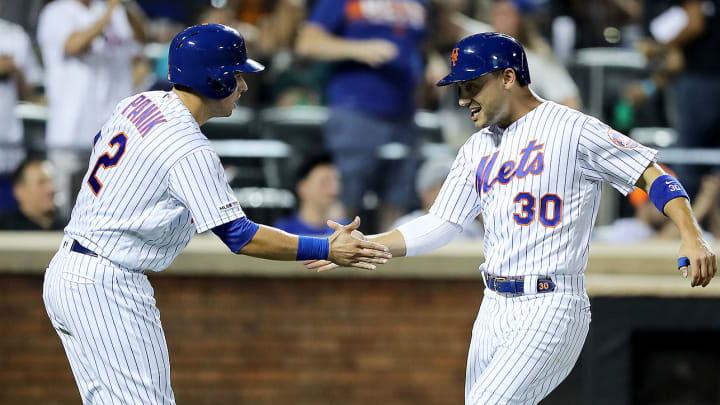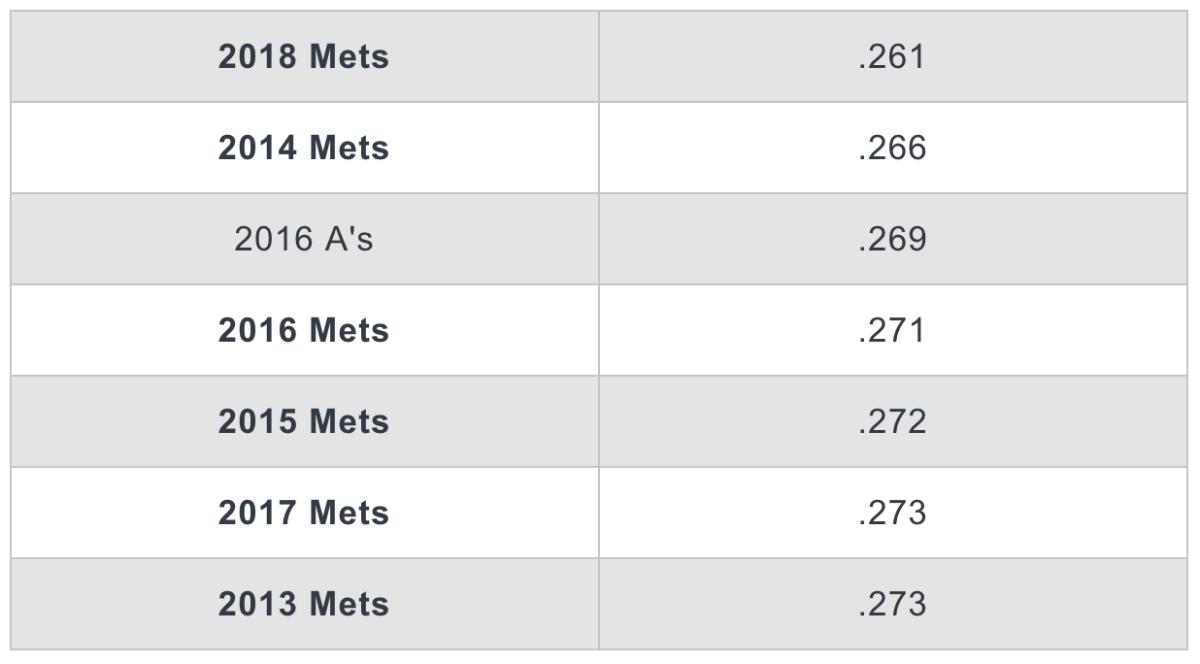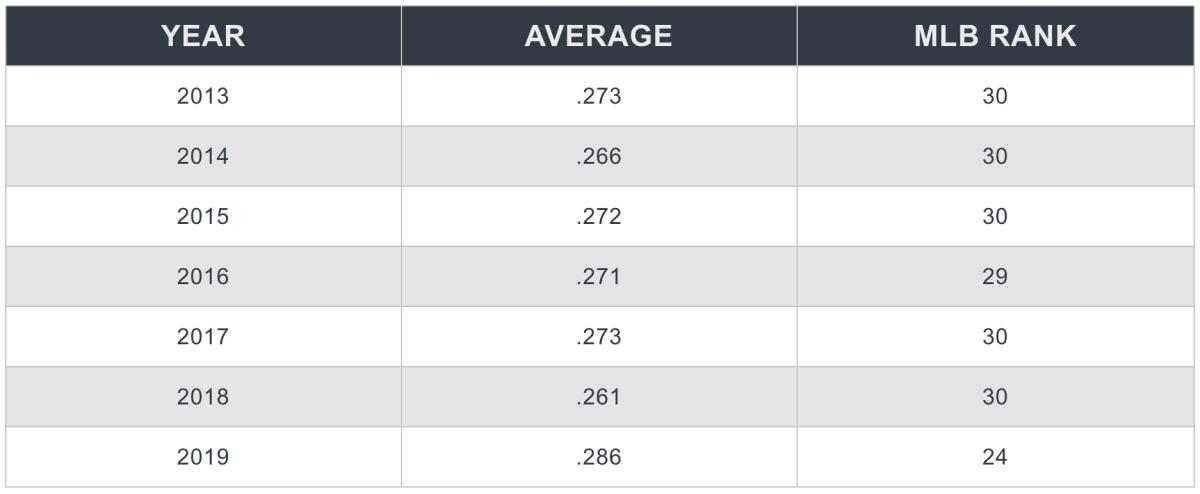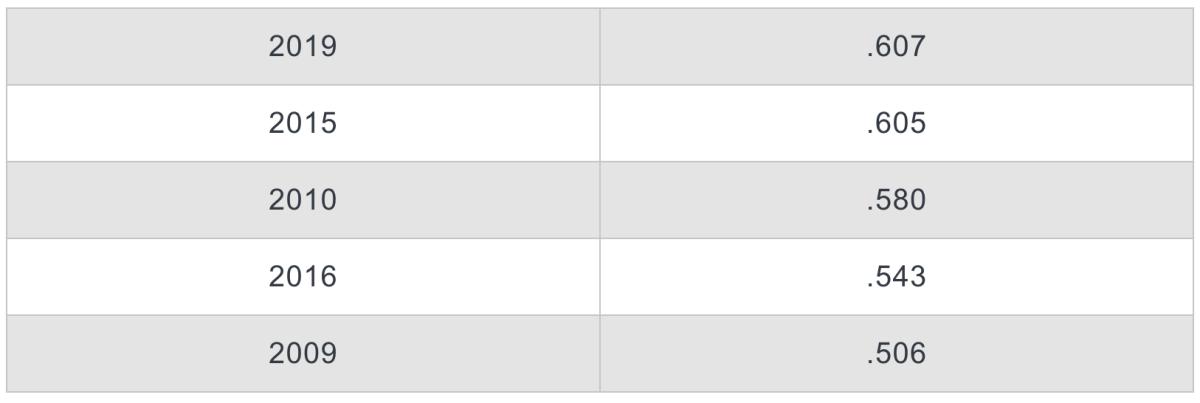How the Mets Solved the Mystery of Flushing With a Shift in Offensive Philosophy

This is the story of how the New York Mets solved The Mystery of Flushing.
It is the story of how they hired a 59-year-old hitting coach who, like many his age, had just been fired in favor of a younger, technology-savvy coach; how they decreased their launch angle more than any other team in baseball; and how they actually tried (and succeeded) to beat the shift.
It is the story of how the Mets defied modern conventions to improve their batting average on balls in play at home by 25 points and to build their best team at home in almost two decades.
In hiring hitting coach Chili Davis, who lost his job with the Cubs for being a decidedly old school disciple, and then 82-year-old pitching coach Phil Regan, who is so old his first big league manager was born in 1896, agent-turned-general-manager Brodie Van Wagenen has cut from baseball norms to build a better Mets team.
“I took the job as a little bit of a zag to everybody else’s zig,” Van Wagenen said. “The decisions that we’ve made have carried out that same trend. All along our goal is to be as efficient as possible.”
Even after a weekend sweep by Atlanta, the Mets are winning more than 60% of their home games for the first time since 2000, nine years before they moved into Citi Field, which had become a haunted hitters’ graveyard for the home team. Last year I wrote about how the club was so mystified as to why its hitters were so much worse at home than on the road—especially on batting average on balls in play—that assistant general manager John Ricco and the team’s analytics department launched their version of a CSI investigation into what the heck was going on.
How bad was Citi Field stifling Mets batters? This bad:
MLB Lowest Home BABIP Since 2013

And this bad: In that same timeframe from 2013–2018, the Mets ranked seventh in runs scored and sixth in BABIP in MLB on the road, but 30th in both categories at home.
Citi Field was taking one of the top seven road offenses in baseball and turning it into the worst offense in baseball. New York’s BABIP over those six seasons was .269, 17 points worse than any other team and 33 points worse than major league average.
What in the name of Vlissingen, the Dutch port city that is the namesake of Flushing, was going on at Citi Field? Was it the wind off Flushing Bay? The curse of Nathan Hale, the American spy who was caught by the British near Flushing Bay and hanged? Or the curse of Sharknado 2, which used Citi Field for a filming location?
When Van Wagonen was hired, he studied the results of the research by Ricco’s team. The numbers revealed issues that seemed obvious anecdotally to a Mets fan: the team’s hitters were poor at using the whole field, at hitting line drives and at coming through with runners in scoring position.
For years the Mets had loaded their offense with too many of the same type of hitter: high launch angle, pull hitters. Beginning in 2015, the Mets ranked fourth, second, second and sixth in average launch angle. Van Wagonen had these issues in mind when he searched for a hitting coach.
“We did interview a number of hitting coaches,” he said. “Chili was a target because of how he communicated to us during his interview that he valued situational hitting. I don’t want to say he rejected the ideas of strikeouts, home runs and launch angles, but he was a switch hitter who used the whole field. That appealed to us.”
Translation: Davis is not a big believer in launch angle or the acceptance of a Three True Outcome approach (strikeouts, home runs, walks). The Mets also hired Tom Slater, 51, as the assistant hitting coach. Slater spent nine years coaching in the Yankees system and 17 years coaching in college baseball.
The Mets dumped four of their five highest launch angle hitters from 2018 (Devon Mesoraco, Jay Bruce, Jose Bautista and Wilmer Flores) and added low launch angle hitters such as Robinson Cano, Wilson Ramos and J.D. Davis.
“It was a new mindset in spring training that Chili and Tom Slater installed from day one,” Van Wagonen said. “Some of the new players that came in, such as Robinson Cano, Jed Lowrie before he was hurt, Wilson Ramos, were guys who historically used the whole field and would work quality at-bats. So that was communicated from the coaching staff and veteran players, and it trickled down to the younger players.
“Even Michael Conforto, we saw him in spring training beating the shift and getting hits in the six hole. It was a mindset to try to improve our situational hitting. And Jeff McNeil showed last year how successful bat to ball skills would be in this ballpark. We kind of adopted his personality with the acquisitions. Guys like Joe Panik, who we just brought in, are in that same vein. We felt we had enough power in the form of Conforto, Frazier and [Pete] Alonso.”
Alonso is a major impact hitter who has tied the franchise record for homers with 41, a record for National League rookies. His addition would improve any lineup. But when you examine the overall changes in how the Mets hit, it is clear that they have made the most stunning turnover in hitting philosophy in baseball this year—and they’ve done so by going against most of the technology- and analytically-based trends.
1. Launch Angle
No team in baseball has reduced its average launch angle more than the Mets (by 2.5 degrees). In dropping from 13.2 degrees in 2018 to 10.7 degrees in 2019, New York has gone from ranking sixth in MLB in launch angle to No. 25. A lower launch angle means fewer pop-ups, which are outs as empty as strikeouts (they don’t pressure a defense and they don’t advance runners). No team popped up more often last year than the Mets, who had 367. Now they are in the bottom five, ranking 26th in the majors in pop-ups.
2. Opposite Field Hitting
The Mets already have more opposite field hits than they had all of last season. Conforto has a career-high rate of opposite field hitting (29%). Three of the six Mets with the most opposite field hits are new to the club: Ramos (37), Davis (30) and Cano (26). After ranking 28th in opposite field hits in the majors in 2018, New York is up to seventh in 2019. It's resulted in a decline in shifts seen by the team as well, going from seeing the fourth-most (25.9%) in MLB last year to the 24th-most (20.5%) this year.
3. Clutch Hitting
The Mets are hitting .266 with runners in scoring position, their best mark in a decade and a notable step up from their .245 mark in 2018. They are succeeding more in these clutch spots not only because they are using the whole field much more often than last season, ranking ninth in the majors with 71 opposite field hits with RISP to date (in 2018, they had just 56 such hits total, which was 27th in MLB), but also because they are using lower launch angle swings in these spots (including lower than overall this year). New York's launch angle with RISP is down to 9.9 degrees (ninth in the majors) in 2019 after being at 12.5 degrees (25th) a season ago.
4. Putting the Ball in Play
The Mets are a better rally team. They are playing much less of Three True Outcome baseball than they did last year, dropping to 18th in the majors in TTO plate appearances after finishing 10th with 2,100 in 2018.
The Mets still hit better on the road than they do at Citi Field. But the difference is no longer so enormous. The ballpark is no longer their graveyard:
Mets Year-by-Year BABIP at Citi Field Since 2013

Their home record is the best since 2000, when they were playing in Shea Stadium, and the best since Citi Field opened.
Mets' Best Winning Percentage at Citi Field

“This was something we stressed in spring training: a mindset to be more productive at home and not going through long stretches of not touching the ball,” Van Wagonen said. “That was part of the information we gleaned last year, and not having the ballpark be a disadvantage. We wanted to instill a situational approach that would give us an advantage.
“I think Citi Field can be an advantage for us, with the way our offense continues to be better in situational hitting, and as a result of our quality starting pitching and how our bullpen has stabilized. We’re enjoying the success we had hoped for all season in terms of our won-loss record at home. It’s a stark difference.”
Consider the Mystery of Flushing solved.
